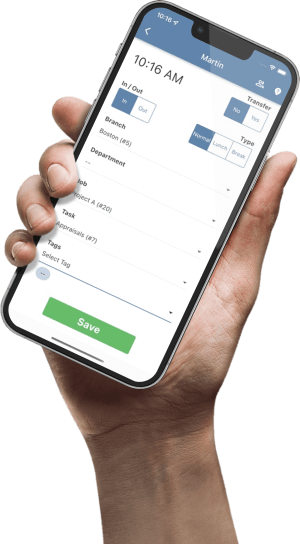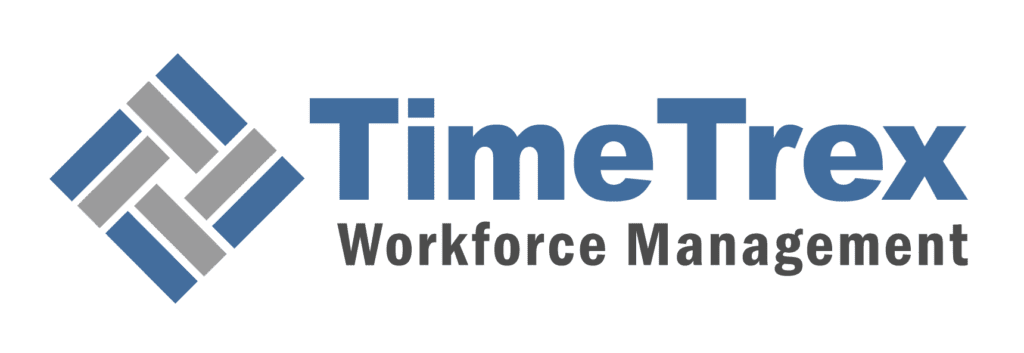
US Minor Work Hours: The Quick Compliance Guide 2025
Navigating the complex web of US minor work hours and child labor laws is a critical responsibility for every American business owner and manager. Compliance isn't just about avoiding hefty fines; it's about protecting young workers and safeguarding your company's reputation. This guide provides an in-depth analysis of the federal Fair Labor Standards Act (FLSA), the intricate patchwork of state-level regulations, rules on hazardous occupations, and the current enforcement climate. Understanding these minor work rules, from federal hour restrictions for 14- and 15-year-olds to the critical differences in state laws for 16- and 17-year-olds, is essential for effective HR management and risk mitigation.
TL;DR
- Federal Law is the Floor: The FLSA sets baseline rules, but if your state law is stricter (more protective of the minor), you must follow the state law.
- Age Matters: Federal law heavily restricts hours for 14- and 15-year-olds (e.g., max 3 hours on a school day) but has no hour limits for 16- and 17-year-olds. However, many states impose strict curfews and hour caps on this older group.
- Hazardous Jobs are Forbidden: The DOL lists 17 Hazardous Occupations (HOs) forbidden for anyone under 18. This includes driving, using forklifts, meat slicers, and operating balers. State laws often add more restrictions.
- States are Diverging: Some states like California and New York have very strict rules (permits, break requirements, hour caps for all minors), while others like Arkansas and Indiana are rolling back protections. This makes a one-size-fits-all policy impossible for multi-state employers.
- Enforcement is Aggressive: The DOL is cracking down, using "hot goods" injunctions to stop shipment of products and assessing penalties per-violation, not per-employee, dramatically increasing financial risk.
- Action is Required: You must audit job roles, train managers on state-specific rules, verify ages meticulously, and monitor legislative changes to stay compliant.
Article Index
The Federal Framework: The Fair Labor Standards Act (FLSA)
Understanding the federal Fair Labor Standards Act (FLSA) of 1938 is the mandatory first step for any corporate compliance program. Its child labor provisions were designed to ensure that when young people work, their employment is safe and doesn't jeopardize their health, well-being, or educational opportunities.
Foundational Principles of Federal Child Labor Law
At the heart of the FLSA's child labor provisions is the concept of "oppressive child labor". Federal law defines this as employing a minor in an occupation for which they don't meet the minimum age standards. An employer found to be engaging in oppressive child labor is in direct violation of the FLSA.
The Act establishes a clear baseline for minimum age in non-agricultural employment. The general minimum age for most jobs is 14 years. However, there are exemptions for minors under 14, including delivering newspapers, acting, casual babysitting, or working for a business wholly owned by their parents (except in mining, manufacturing, or hazardous jobs). Once a youth reaches 18, they are no longer subject to federal youth employment provisions.
Federal Hour and Time Restrictions for 14- and 15-Year-Olds
For employers of 14- and 15-year-old minors, the FLSA imposes strict rules governing when and for how long they may work. These are among the most frequently violated provisions.
Work Hours During School Weeks
- No more than 3 hours on any school day (including Fridays).
- No more than 18 hours total in a school week.
- All work must be performed outside of school hours.
Work Hours During Non-School Weeks
- Up to 8 hours on a non-school day.
- Up to 40 hours in a non-school week.
Time-of-Day Limitations
- Work is only permitted between 7 a.m. and 7 p.m.
- From June 1 through Labor Day, the evening hour is extended to 9 p.m.
Regulations for 16- and 17-Year-Olds
The regulatory landscape changes dramatically for minors aged 16 and 17. Under the FLSA, there are no federal restrictions on the number of hours or the time of day this age group may work. They may be employed for unlimited hours, with one critical caveat: they are prohibited from working in occupations the Secretary of Labor has declared to be hazardous.
This federal "hands-off" approach creates a major compliance challenge. Many states have stepped in to fill this regulatory vacuum with their own, often complex, rules. While an employer might comply with the FLSA by having a 17-year-old work until 11 p.m. on a school night, this same schedule could be a clear violation of state law. National employers cannot afford to formulate their policies based on the simpler federal standard.
Special Federal Programs and Variances
The FLSA allows for specific variances for 14- and 15-year-olds in approved, school-supervised programs like the Work Experience and Career Exploration Program (WECEP) and Work-Study Programs (WSP). Under these certified programs, participants may be employed during school hours and for up to 23 hours in a school week, providing a formal mechanism to integrate work and education under strict requirements.
The State-Level Labyrinth: Navigating a Patchwork of Regulations
While the FLSA provides a universal floor, the bulk of compliance complexity comes from diverse and often more stringent state laws. An employer compliant with federal law may still be in significant violation of state law.
The Supremacy of Stricter Standards
The interaction between federal and state child labor laws is governed by a single, paramount doctrine: the stricter standard prevails. If a state law is more protective of the minor than the federal rule, the state law must be followed. This has profound practical implications. For example, if federal law permits a 15-year-old to work until 9 p.m. in the summer, but state law sets a 7 p.m. year-round curfew, the employer must follow the 7 p.m. rule.
This creates a "Compliance Chasm," with highly regulated states like California and New York on one side and deregulating states like Arkansas and Indiana on the other. A centralized, one-size-fits-all HR policy for minor employment is legally untenable.
Comparative State Analysis of Hour Restrictions
The following table illustrates the vast scope of regulatory variation. This is not an exhaustive list but demonstrates why a state-by-state analysis is crucial. For a comprehensive overview, see TimeTrex's guide to Child Labor Laws in Every US State.
| Jurisdiction | Age Group | School Day Hours | School Week Hours | Non-School Day Hours | Non-School Week Hours | Time-of-Day Curfew (During School Year) |
|---|---|---|---|---|---|---|
| Federal (FLSA) | 14-15 | 3 | 18 | 8 | 40 | 7 a.m. - 7 p.m. |
| Federal (FLSA) | 16-17 | None | None | None | None | None |
| California | 14-15 | 3 | 18 | 8 | 40 | 7 a.m. - 7 p.m. |
| California | 16-17 | 4 | 48 | 8 | 48 | 5 a.m. - 10 p.m. (12:30 a.m. before non-school day) |
| New York | 14-15 | 3 | 18 | 8 | 40 | 7 a.m. - 7 p.m. |
| New York | 16-17 | 4 (Mon-Thurs) | 28 | 8 | 48 | 6 a.m. - 10 p.m. (Requires permission to work later) |
| Iowa | 14-15 | 6 | 28 | 8 | 40 | 7 a.m. - 9 p.m. |
| Arkansas | 14-15 | 8 | 48 | 8 | 48 | 6 a.m. - 7 p.m. (9 p.m. before non-school day) |
State-Mandated Meal and Rest Breaks
A significant area of state regulation with no federal counterpart is mandated meal and rest breaks. The FLSA does not require breaks for minor employees. However, many states do. For example, Iowa requires a 30-minute break for 14- and 15-year-olds whose shift is five hours or longer. These state-specific requirements must be integrated into your scheduling and timekeeping systems.
Work Permits and Age Certification
While the FLSA does not require work permits, the DOL strongly advises employers to obtain a state-issued age certificate as a good-faith defense against unintentional age violations. Many states, however, make these permits mandatory. Recently, states like Arkansas have eliminated permit requirements, arguing they reduce administrative burdens, but critics say this removes a crucial safety checkpoint. Regardless of state law, the employer is ultimately responsible for verifying and documenting a minor employee's date of birth.
Prohibited and Hazardous Occupations: Protecting Youth from Harm
Beyond regulating hours, child labor law protects young workers from dangerous jobs through detailed lists of prohibited tasks.
Federal Hazardous Occupations Orders (HOs) for Minors Under 18
The Secretary of Labor has declared 17 non-agricultural occupations to be "particularly hazardous" for any minor under 18. Employment in these occupations is considered oppressive child labor and is a serious violation. Some of the most commonly violated HOs include:
- HO 2: Driving a motor vehicle on public roads.
- HO 7: Operating power-driven hoisting apparatus, including forklifts.
- HO 10: Operating power-driven meat-processing machines, including deli slicers.
- HO 11: Operating power-driven bakery machines like large mixers.
- HO 12: Operating balers and compactors.
- HO 16: All roofing operations.
A dangerous trend has emerged where some states create "work-based learning" programs that appear to conflict with federal HOs. Following a state law that purports to allow a 16-year-old to work in demolition does not preempt the federal prohibition. The legal risk falls squarely on the employer.
| HO Number & Title | Summary of Prohibition | Key Exemptions (If Applicable) |
|---|---|---|
| HO 1: Explosives | Work in plants manufacturing or storing explosives. | Work in a designated "nonexplosives area." |
| HO 2: Motor-Vehicle Driver | Driving motor vehicles on public roads; working as an outside helper. | Incidental driving for 17-year-olds under strict conditions. |
| HO 3: Coal Mining | All occupations in or about a coal mine. | Certain surface-level office work. |
| HO 4: Logging & Sawmilling | All occupations in logging and sawmill operations. | Apprentice/student-learner. |
| HO 5: Woodworking Machines | Operating power-driven woodworking machines. | Apprentice/student-learner. |
| HO 6: Radioactive Substances | Work involving exposure to radioactive substances. | None. |
| HO 7: Hoisting Apparatus | Operating elevators, cranes, derricks, hoists, forklifts. | Riding in an automatic passenger elevator. |
| HO 8: Metal-Working Machines | Operating power-driven metal forming, punching, and shearing machines. | Apprentice/student-learner. |
| HO 9: Mining (Non-Coal) | All occupations in connection with mining of minerals other than coal. | Certain surface-level tasks. |
| HO 10: Meat-Processing Machines | Operating power-driven meat slicers, grinders; work on killing floors. | Apprentice/student-learner. |
| HO 11: Bakery Machines | Operating power-driven bakery mixers and other specified machines. | Operating certain lightweight, countertop mixers. |
| HO 12: Balers & Compactors | Operating or assisting to operate most balers and compactors. | 16/17-year-olds may load (not operate) certain safe machines. |
| HO 13: Brick & Tile Mfg. | Work in or about plants manufacturing clay or silica brick products. | Limited work in storage, shipping, offices. |
| HO 14: Saws & Shears | Operating power-driven circular saws, band saws, chain saws, guillotine shears. | Apprentice/student-learner. |
| HO 15: Wrecking & Demolition | All occupations in wrecking, demolition, and shipbreaking operations. | None. |
| HO 16: Roofing Operations | All occupations in roofing and all work on or about a roof. | Apprentice/student-learner. |
| HO 17: Excavation Operations | Working in trenches, tunnels, and shafts. | Limited work in shallow trenches; apprentice/student-learner. |
Prohibited Work for 14- and 15-Year-Olds
In addition to the 17 HOs, the FLSA specifies more prohibited jobs for 14- and 15-year-olds. Key prohibitions include most manufacturing and processing work, operating most power-driven machinery, working in freezers or meat coolers, most cooking activities, and working from ladders or scaffolds. Permissible occupations generally fall within retail and service, like cashiering, bagging, and clerical work.
State-Specific Hazardous Occupation Lists
States frequently add to the federal list of hazardous jobs. For example, Florida prohibits minors from working with electrical apparatus, and North Carolina restricts welding and work that involves a fall risk of 10 feet or more. A thorough, state-by-state audit of job duties is a critical component of risk management.
Industry-Specific Regulations and Exemptions
Certain industries like agriculture and entertainment have unique and complex regulatory schemes that deviate from the baseline standards.
Agricultural Employment
The FLSA provides more lenient rules for minors in agriculture. Youths aged 16+ can work any farm job at any time. Ages 14-15 can work outside school hours in non-hazardous jobs. Ages 12-13 can work outside school hours in non-hazardous jobs with parental consent or if a parent works on the same farm. The most significant exemption allows youths of any age to work any job, including hazardous ones, on a farm owned or operated by their parent.
The Entertainment Industry
The FLSA broadly exempts children employed as actors or performers, making regulation almost entirely a matter of state law. For productions, this requires a careful review of each state's rules, which often include dual permit systems, strict hour limits tiered by age, mandatory on-set education, and "Coogan Laws" that require a percentage of earnings to be placed in a trust. A significant regulatory gap has emerged with the rise of "child influencers," prompting new legislation in states like Illinois to extend protections to this new form of labor.
Other Notable Exemptions
The FLSA also exempts minors engaged in the delivery of newspapers to the consumer and those performing casual babysitting or minor chores in a private home. These activities are considered outside a traditional employment relationship.
Enforcement, Penalties, and the Current Legislative Climate
The effectiveness of child labor laws hinges on robust enforcement. In recent years, the landscape has been defined by rising violations, escalated federal enforcement, and a contentious state-level debate over these protections.
Enforcement Mechanisms
The U.S. Department of Labor's Wage and Hour Division (WHD) is using more aggressive enforcement tools in response to an "alarming increase" in violations. A powerful tool is the "hot goods" provision, which allows the DOL to get a court injunction to stop a company from shipping any goods produced in a facility where "oppressive child labor" occurred. This can bring a company's entire supply chain to a halt, posing a catastrophic threat to business continuity.
Penalties for Non-Compliance
Employers who violate federal child labor laws face significant civil and criminal penalties.
- Civil Money Penalties (CMPs): Up to $11,000 for each employee subject to a violation.
- Serious Injury/Death: Penalties up to $50,000, which can be doubled to $100,000 for willful or repeated violations.
- Criminal Liability: Willful violations can lead to fines up to $10,000 and, for a second offense, potential imprisonment.
The Evolving Landscape: Recent and Proposed Legislative Changes
The current era is marked by a profound tension. While the federal government is ramping up enforcement, many states are actively weakening their own protections. At least 28 states have introduced bills to roll back child labor laws since 2021. In response, a countervailing movement to strengthen protections has also gained momentum in other states.
| State | Bill Number/Year | Summary of Change | Classification |
|---|---|---|---|
| Arkansas | H.B. 1410 (2023) | Eliminates work permit requirement for minors under 16. | Weakening |
| Florida | HB 49 (2024) | Allows 16-17 year-olds to work longer hours and more consecutive days. | Weakening |
| Indiana | HB 1093 (2024) | Eliminates all hour restrictions for 16- and 17-year-olds (effective 2025). | Weakening |
| Iowa | SF 542 (2023) | Lifts restrictions on certain hazardous work for minors in "work-based learning" programs. | Weakening |
| Illinois | SB 1466 (2023) | Tightens laws, adds protections for child performers/influencers, increases penalties. | Strengthening |
| Colorado | HB23-1231 (2023) | Increases civil penalties for violations. | Strengthening |
| Virginia | HB 1992 (2024) | Increases civil penalties for violations causing serious injury or death. | Strengthening |
Strategic Recommendations for Employer Compliance
Navigating this volatile regulatory environment requires a proactive, diligent, and state-specific compliance strategy. Here are our key recommendations:
- Audit and Assess Risk: Regularly audit all job positions filled by minors against both federal and state prohibited job lists and hour restrictions.
- Train Your Managers: Implement comprehensive and recurring training for anyone involved in hiring or managing minors. Emphasize the "stricter law applies" principle.
- Verify and Document Age: Establish a foolproof age verification process at the time of hire and meticulously maintain date-of-birth records.
- Adopt a Tiered Compliance Program: For multi-state employers, classify states by regulatory risk and tailor HR policies, payroll systems, and management oversight accordingly.
- Monitor Legislative Changes: Actively monitor proposed and enacted changes to child labor laws at federal and state levels to adapt your policies in real-time.
Simplify Minor Scheduling & Ensure Compliance
Managing minor work hours, state-specific rules, and mandated breaks can be overwhelming. TimeTrex's advanced Shift Management and Scheduling software helps you build compliant schedules, track hours accurately, and prevent costly violations before they happen. Take control of your compliance strategy today.
Learn More About TimeTrex Shift ManagementDisclaimer: The content provided on this webpage is for informational purposes only and is not intended to be a substitute for professional advice. While we strive to ensure the accuracy and timeliness of the information presented here, the details may change over time or vary in different jurisdictions. Therefore, we do not guarantee the completeness, reliability, or absolute accuracy of this information. The information on this page should not be used as a basis for making legal, financial, or any other key decisions. We strongly advise consulting with a qualified professional or expert in the relevant field for specific advice, guidance, or services. By using this webpage, you acknowledge that the information is offered “as is” and that we are not liable for any errors, omissions, or inaccuracies in the content, nor for any actions taken based on the information provided. We shall not be held liable for any direct, indirect, incidental, consequential, or punitive damages arising out of your access to, use of, or reliance on any content on this page.
About The Author

Roger Wood
With a Baccalaureate of Science and advanced studies in business, Roger has successfully managed businesses across five continents. His extensive global experience and strategic insights contribute significantly to the success of TimeTrex. His expertise and dedication ensure we deliver top-notch solutions to our clients around the world.
Time To Clock-In
Start your 30-day free trial!
Experience the Ultimate Workforce Solution and Revolutionize Your Business Today
- Eliminate Errors
- Simple & Easy To Use
- Real-time Reporting

Saving businesses time and money through better workforce management since 2003.
Copyright © 2025 TimeTrex. All Rights Reserved.
